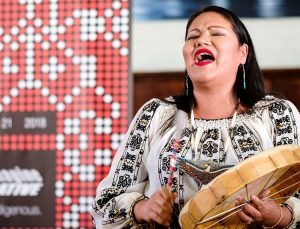IsumaTV, launched in 2008, is “Canada’s first media distribution company specializing in Inuit and Aboriginal films.” The programming originated from a coalition including: Igloolik Isuma Productions (heavily referenced in Ginsburg, 2002); Nunavut Independent TV Network (NITV); Arnait Video Productions; Artcirq; ImagineNATIVE Film+Media Arts Festival; Vtape; Native Communications Society of the NWT; and other non-profit agencies.
The IsumaTV platform is really beautiful. It’s a collaborative multimedia space, where each user can “design their own space, or channel, to reflect their own identity, mandate and audience.”
The platform and search functions rely on icons and colour-coded language, with menu options in Inuktitut Roman, Inuktitut Syllabic, English, French and Spanish. IsumaTV “honours oral languages” and “emphasize[s] oral Inuktitut uploads rather than syllabic texts.” Take a look at the record for this story about Ptarmigan and Snow Bunting, for example. They have the title, links, and a tag in Inuktitut.
All citations above are from: IsumaTV. About us. http://www.isuma.tv/about-us

